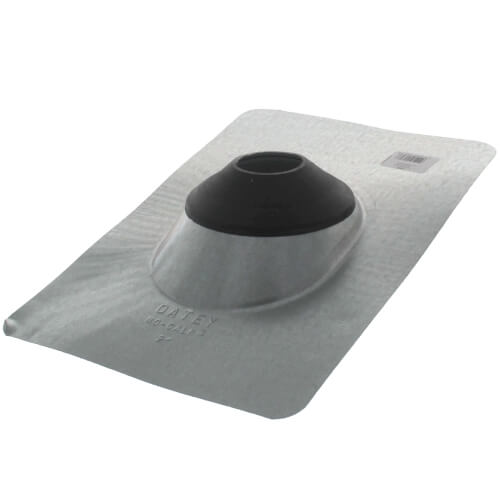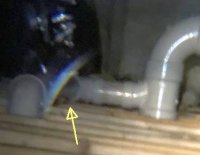DrBoom
New Member
We've had a problem with a ceiling leak during larger snow accumulations that I'm reasonably confident is caused by snow covering one of the vent stacks and leaking from one of the vent stack joints in the attic. Unfortunately, the section of attic where I suspect the joint is a problem is far too confined for me to get in there and try to improve the joint.
Regardless, it seems prudent to extend the vent stack another 6-12" since it is my understanding that the vent should never be snow covered.
From the ground and what I can see from a distance in the attic, the entire vent stack appears to be PVC. It looks like maybe 3" diameter but I haven't yet climbed onto the roof to verify. From the ground, the two stacks in my attached picture appear to be different diameters but this may be an illusion from the distance.
Is there anything more complicated to extending the vent stack than adding an appropriately sized PVC coupler and short section of PVC pipe? I plan to climb onto the roof when we have a good weather day on the weekend to measure the pipe diameter but appreciate any advice or other things I should look for while inspecting the stack.
I've attached a picture of the relevant roof section. The stack on the right of the picture is the one I believe is causing (very brown) water on the ceiling but I plan to extend all 3 (another in a different section of the roof) while I'm at it.
Thanks, Jon (in southern NH)

Regardless, it seems prudent to extend the vent stack another 6-12" since it is my understanding that the vent should never be snow covered.
From the ground and what I can see from a distance in the attic, the entire vent stack appears to be PVC. It looks like maybe 3" diameter but I haven't yet climbed onto the roof to verify. From the ground, the two stacks in my attached picture appear to be different diameters but this may be an illusion from the distance.
Is there anything more complicated to extending the vent stack than adding an appropriately sized PVC coupler and short section of PVC pipe? I plan to climb onto the roof when we have a good weather day on the weekend to measure the pipe diameter but appreciate any advice or other things I should look for while inspecting the stack.
I've attached a picture of the relevant roof section. The stack on the right of the picture is the one I believe is causing (very brown) water on the ceiling but I plan to extend all 3 (another in a different section of the roof) while I'm at it.
Thanks, Jon (in southern NH)


